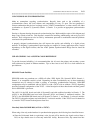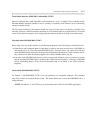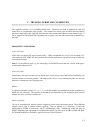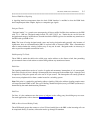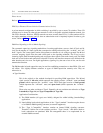TRUNKING TERMS AND CAPABILITIES C-5
_ ______________________________________________________________________________________
_ ______________________________________________________________________________________
_ ______________________________________________________________________________________
Derived E&M Lead Signaling
A signaling interface arrangement where the basic E&M interface is modified so that the E&M leads
derive/superimpose either simplex, duplex, or composite type signals.
Designed Trunks
‘‘Designed trunks’’ is a generic term encompassing all those tariffed facilities that terminate on the PBX
with 3.5 +/- 1dB loss. Designed trunks include Tie, APLT, RLT, etc,. Trunks that do not fall into the
designed trunk category include those CO trunks that deliver POTS-type services and that may terminate on
the PBX with up to 8dB of loss.
Note: The issue of having designed trunks versus not having designed trunks generally only becomes of
significance when an electromechanical PBX is replaced with an electronic PBX. Then a determination
must be made whether the existing facilities may or may not be used. Designed trunks are necessary in
order to provide acceptable transmission levels.
Dial Repeating Tie Trunk
Those PBX tie trunks that deliver the called party station address to the distant switch, thus permitting
private network inter-switch station-to-station calling without any attendant assistance.
Dial-Pulse
The signaling method that consists of a series of regular and momentary interruptions of a dc current path.
Each series consists of from 1 through 10 interruptions that correspond to the number digits 1 through 9 and
0 respectively. Dial pulse speeds are at the rate of 10 per second. The interruptions are usually produced
form a rotary telephone dial or from a sender located in a switching system.
Note: Dial pulse is a method for performing address signaling. Dial-pulse address signaling requires more
call setup time than DTMF or MF. The type of dialing, whether dial-pulse (rotary) or DTMF (touch-tone) is
determined by the trunk administration parameters.
Dial Tone
For lines, it is the continuous tone that serves to indicate (to the calling party) that dialing may now start.
For trunk applications, refer to the term Precise Dial Tone.
DID (or Direct Inward Dialing Trunk)
Those PBX trunk groups that connect to a local CO and send digits to the PBX so that incoming calls can
be completed directly to stations, without the need to go through an attendant.



